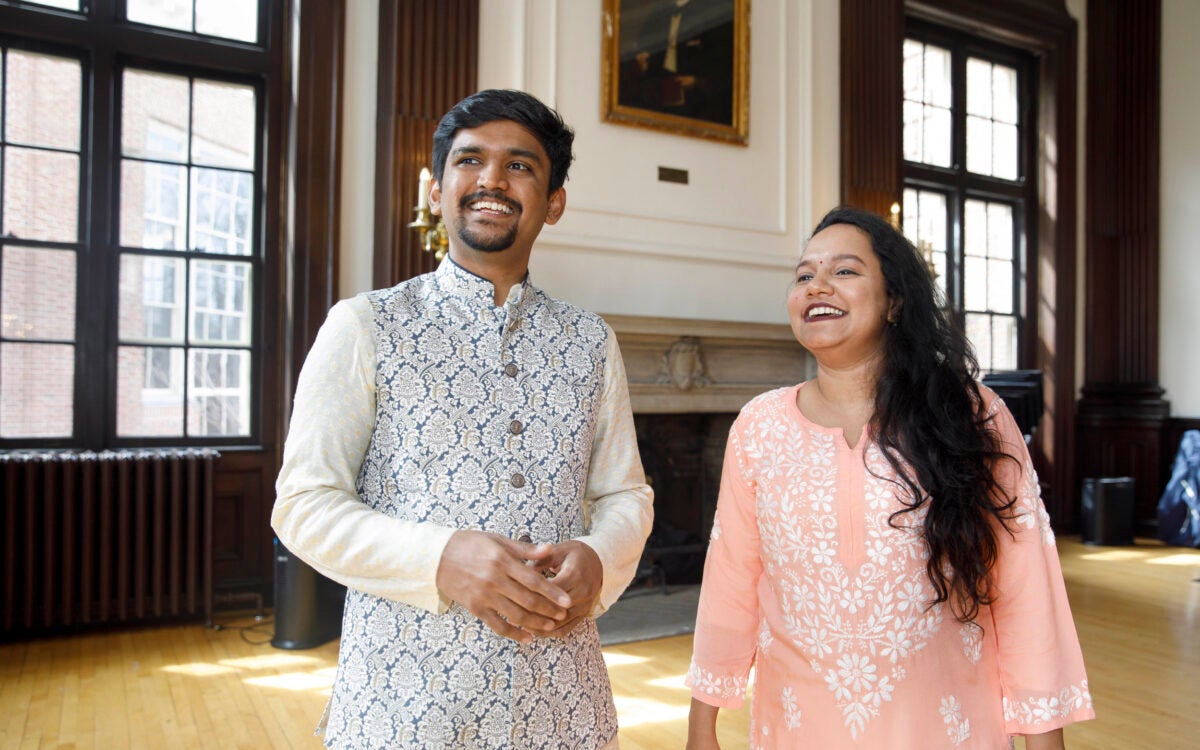Monkeys Distinguish Different Languages — Its Not All Greek to Them

Monkeys can tell the difference between Dutch and Japanese as easily as human infants, language researchers have found.
This ability makes humans less special than previously believed, and ties our mental abilities more closely to our evolutionary kin.
“We dont know yet what mechanisms in our brain allow us to discriminate different languages, but we do know now that these mechanisms are not unique to humans,” says Marc Hauser, professor of psychology at Harvard University. “I believe that we inherited an ability to process speech from our primate ancestors (monkeys and apes).”
Working with collaborators at the Centre National de la Recherche Scientifique in Paris, Hauser and his Harvard colleagues tested the reactions of both cotton-top tamarin monkeys and French infants to the different sounds of Dutch and Japanese languages. Both listened to speakers of one language until they became bored. When the speakers switched to a new language, babies instantly showed a shift in attention by increasing the rate at which they sucked on pacifiers. Cotton-tops quickly looked in the direction of the speakers.
Its not just the change in sound that attracts their attention. When the sentences are played backward, neither responds. “Playing the languages backward results in sounds that no vocal tract can produce,” notes Hauser. “Theres nothing to discriminate.”
Both infants and monkeys sense a change in rhythm between the languages, the researchers believe. “If youre not a native speaker, rhythm is the first thing that pops out at you about a language,” Hauser explains. “Dutch and Japanese have very different rhythms.”
Jacques Mehler, one of the French scientists, had previously found that infants discriminate between such rhythms. However, they dont respond to languages with similar rhythms such as Dutch, German, and English, or French, Italian, and Spanish. The latest experiments show that the same is true of monkeys and newborns 3 to 4 days old.
Aping Speech
The scientists describe their results in the Friday (April 14) issue of the journal Science. Franck Ramus, from the Paris research center, is lead author. “This is the first paper ever that directly compares the response of humans and other animals to the same stimuli using the same method,” notes Hauser. “Its kind of revolutionary in that sense.”
Previous experiments involved training the animals and used only short segments of speech. This new technique cracks open the dam to a flood of other tests of animal-versus-human speech perception. What kind of abilities do chimps and other apes possess, since they are evolutionarily closer to us than tamarin monkeys? How and when did speech perception arise?
Brain mechanisms that allow us to perceive speech may not have evolved for that specific purpose, but as a general ability for detecting sounds, Hauser speculates. If so, it may go far back on the evolutionary road.
“Speech is a continuum of sound that we break up into categories,” he notes. “Even crickets, which evolved billions of years ago, possess an ability to divide sounds into categories they avoid and categories they approach. Birds also break up sounds into categories, particularly songbirds. Looked at this way, its not so surprising that monkeys perceive sound boundaries, and that these boundaries occur in the same place in humans, their evolutionary cousins.”
Nevertheless, the researchers did find subtle differences that may be important. The babies heard two different speakers each say 10 sentences in Dutch, then two others speakers voiced 20 sentences in Japanese. Apparently, the variety of speakers, as opposed to changes in languages, confused the infants.
The investigators then tested them with synthesized speech from which they removed all speaker variations while precisely maintaining the rhythm of the two languages. With the melody gone but the rhythm intact, the infants responded as expected, sucking heartily to show they had discriminated between the two languages.
Monkeys, on the other hand, hesitated more with synthesized than with natural speech. “It may be that monkeys respond more to the greater richness in natural speech,” Hauser says. “When all the data are pooled, however, these small differences do not alter our overall conclusion.”
What occurs above and beyond such discrimination is a human brain that can recombine the elements of speech into an infinite variety of meaningful expressions. Can other animals do this? Hauser is not quick to dismiss the idea.
In his latest book Wild Minds (published by Henry Holt), he argues that just because animals cant give voice to interesting thoughts, it doesnt mean that they dont have them.
“The babbling of 1- to 2- month-old humans is similar to the sounds that monkeys make,” Hauser points out. “Its not until 3 to 4 months of age that a human vocal tract develops its adult form, and we can give voice to what we hear, see, and feel. Apes and monkeys have intricate family and social lives, but they lack the physical ability to express the richness of these relationships. That doesnt mean they dont have thoughts that would interest us.”




